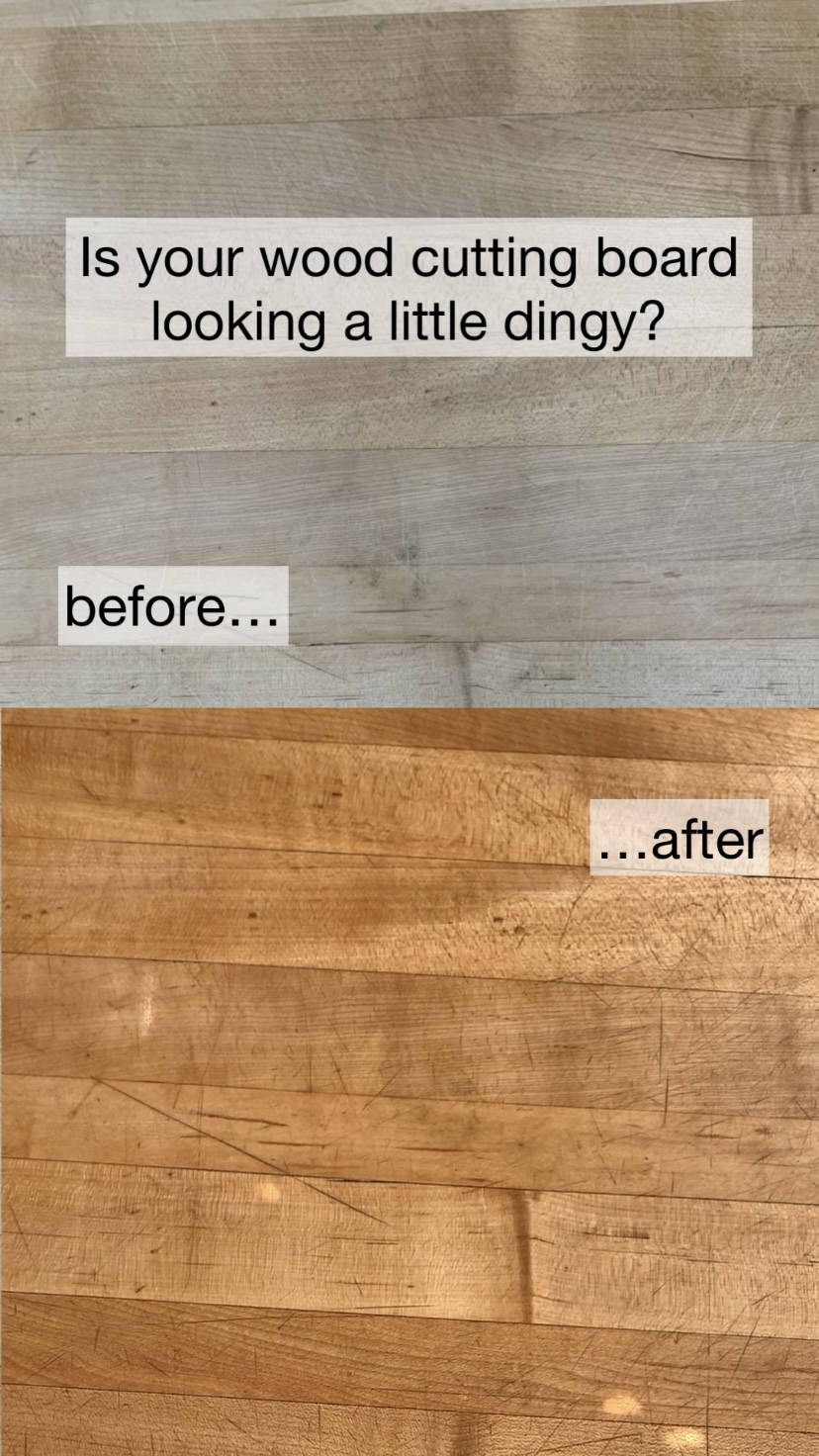How to Refinish a Wood Cutting Board

Wood cutting boards are superior to plastic for several reasons. Firstly, wood possesses natural antibacterial properties, meaning that it actively inhibits the growth of bacteria. This makes wood cutting boards inherently more hygienic compared to plastic counterparts. Additionally, wood cutting boards tend to last a lifetime with proper care. The durability of wood ensures that it can withstand heavy chopping and slicing without showing signs of wear and tear. Unlike plastic boards, which can easily develop deep knife scars and harbor bacteria in the grooves, wood boards can be resurfaced and rejuvenated to maintain their pristine condition.
BUYING A WOOD CUTTING BOARD:
When purchasing a wood cutting board, there are several key factors to consider. Avoid buying a cutting board made of multiple pieces of wood, as the glues used in their construction can be toxic. Instead, opt for a solid wood cutting board, made from hardwoods. Good options would be maple or walnut as they are known for their durability and natural antibacterial properties. Look for boards that are thick and sturdy, so they can withstand heavy use without warping or cracking. Additionally, be cautious of cutting boards that are stained or oiled with anything other than (cutting board-safe) fractionated coconut oil, as many stains and oils contain harmful toxins.
CARING FOR A WOOD CUTTING BOARD:
Properly caring for a wood cutting board is essential to maintaining its longevity and hygienic qualities. Firstly, regularly oiling the board with cutting board-safe coconut oil helps to prevent it from drying out and cracking. This should be done every few weeks or as needed. Additionally, it is crucial to avoid exposing the wood cutting board to excessive moisture. Therefore, never put it in the dishwasher or soak it in water. Instead, clean it by gently scrubbing with warm, soapy water, rinsing thoroughly, and then propping it up to dry, so all sides are exposed to air flow.
REFINISHING A WOOD CUTTING BOARD:
Step One (Optional): Sand your cutting board using a 120 grit sand paper, then a 220 grit sand paper. This is only necessary when the cutting board shows signs of wear, such as deep knife scars, discoloration, or roughness.
Step Two: Wash the cutting board thoroughly with warm water and mild soap. After rinsing, prop the board up in a way that allows air to circulate around it, facilitating proper drying and preventing the growth of mold. Allow the cutting board to dry for 24 hours.
Step Three: Sanitize the cutting board by sprinkling it with coarse salt, cut a lemon in half and rub it vigorously over the surface. Use the lemon juice and salt to create a natural cleaning paste. Allow the mixture to sit on the board for a few minutes before rinsing it with warm water. Then, prop the board up to ensure proper air flow all around it and allow it to dry for 24 hours.
Step Four: Apply a generous amount of (cutting board-safe) fractionated coconut oil to the entire surface of the board, using a clean cloth or paper towel. Allow the oil to penetrate the wood by propping the board up with supports, such as small blocks or bowls, to allow air flow all around it. This will help the oil to fully absorb into the wood and promote even drying.
Follow me!
INSTAGRAM: https://www.instagram.com/thegreekgalley/?igshid=YmMyMTA2MY%3D
TIKTOK: https://www.tiktok.com/@thegreekgalley?lang=en
PINTEREST: https://www.pinterest.com/thegreekgalley/